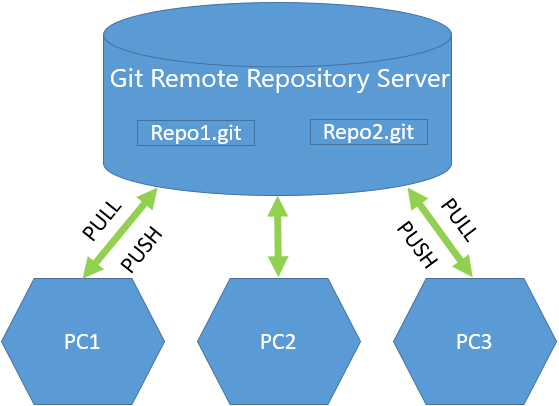

This command accepts the name of the remote (which is usually origin) and the new remote URL to which you want the repository to point. If you want to add your git remote repository go to your project directory and use git remote add command to connect local directory to remote repository.

Git add remote host how to#
This exact use case is detailed completely in our full guide on how to publish files with Git. In this case, we will be using the Git Push command. Git clone in git-scm $ git clone -bare my_project my_project.gitĬloning into bare repository my_project.git. The git remote set-url command changes the Git remote associated with a repository. With Git, you can manage the files locally, commit changes, and upload the changes without ever leaving a single command line. Add the changes to the staging area: git add. To verify that everything is setup up correctly, create a test file: touch testfile. Do not forget to replace gitserverip with your Git server hostname or IP address. We use the live alias that we used when setting the remote. To complete, we just push everything to the server. After git commit we have -m which means we will type a message. Make the _directory_ itself the $GIT_DIR. The last step is to add the git remote to your local repository: git remote add origin gitgitserverip:projectname.git. git commit -m 'My project is ready' Just to remember, the dot after git add means you are adding all files to stage. Rename a remote connection from old-name to new-name.
git remote rename < old - name > < new - name >.Remove the connection to the remote repository called name. _directory_ and placing the administrative files in _directory_/.git After adding a remote, you’ll be able to use name as a convenient shortcut for url in other Git commands. Into a new bare repository (a repository that doesn’t containĪ working directory). In order to set up a Git server, you have to export an existing repository Second Alternative Create bare repository

This is what the 'origin' remote connection points to. This local Git repository will already have a connection to the original remote set up, automatically. > The fail log caused by deadlock is shown below: > 369.606973 INFO: task ax25deadlock:157 blocked for more than 245 seconds. Cloning a repository from a remote server downloads the project to your local computer and leaves you with a local Git repository. From now on git will keep pushing changes from master to origin every time you use the git push command. If the client > doesnt connect to server and calls read() directly, it will not > receive any packets forever. This will also push all the changes in the local branch master to the remote server origin. Log in to the remote server ssh an empty bare repo: mkdir /srv/git/my_project.gitīack in local host, add the remote: git remote add origin changes: git push origin master and block until it receives a packet from the remote. An alternative workflow that does not involve cloning the repo locally


 0 kommentar(er)
0 kommentar(er)
